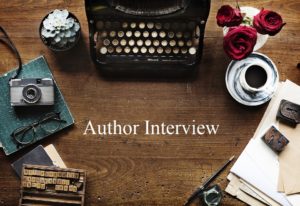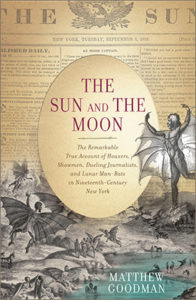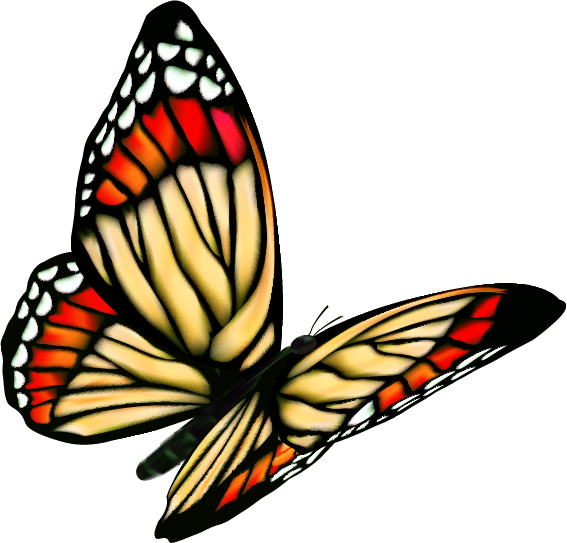An Interview with Matthew Goodman
 Every once in a great while, we cross paths with people who inspire us. Matthew Goodman is one of those people. I had heard of him and his books prior to meeting him last summer at the Antioch Writers’ Workshop; after all, he is a New York Times bestselling author. But I had no idea just how impressive he would be in person. And I don’t mean that he’s intimidating, because he’s not (even though his credentials have the means to intimidate someone like me). From the moment he began speaking about creative nonfiction and narrative history at the conference, it was clear just how much he loved his job. And that passion for writing makes him a fantastic teacher. I was lucky enough to have had lunch with him last summer too, where I learned even more about him, the craft of writing, and just how fascinating history can be. In addition to essays, book reviews, short stories, and articles, Matthew has written several books, which include Eighty Days: Nellie Bly and Elizabeth Bisland’s History-Making Race Around the World, The Sun and the Moon: The Remarkable True Account of Hoaxers, Showmen, Dueling Journalists, and Lunar Man-Bats in Nineteenth Century New York, and Jewish Food: The World at Table. He was in the process of finishing a draft of his latest work when he answered these questions, so I’m especially thankful that he took the time out of his incredibly busy schedule to do so.
Every once in a great while, we cross paths with people who inspire us. Matthew Goodman is one of those people. I had heard of him and his books prior to meeting him last summer at the Antioch Writers’ Workshop; after all, he is a New York Times bestselling author. But I had no idea just how impressive he would be in person. And I don’t mean that he’s intimidating, because he’s not (even though his credentials have the means to intimidate someone like me). From the moment he began speaking about creative nonfiction and narrative history at the conference, it was clear just how much he loved his job. And that passion for writing makes him a fantastic teacher. I was lucky enough to have had lunch with him last summer too, where I learned even more about him, the craft of writing, and just how fascinating history can be. In addition to essays, book reviews, short stories, and articles, Matthew has written several books, which include Eighty Days: Nellie Bly and Elizabeth Bisland’s History-Making Race Around the World, The Sun and the Moon: The Remarkable True Account of Hoaxers, Showmen, Dueling Journalists, and Lunar Man-Bats in Nineteenth Century New York, and Jewish Food: The World at Table. He was in the process of finishing a draft of his latest work when he answered these questions, so I’m especially thankful that he took the time out of his incredibly busy schedule to do so.
Christina: You primarily write nonfiction. Have you always been drawn to nonfiction over fiction? And how did you decide to follow one path versus the other?
Matthew: I actually started out as a fiction writer — got my MFA at Vermont College writing short stories — and for the longest time that was where I thought my writing path was headed. I published several stories in decent literary mags (once, I recall, I got paid enough for a short story to pay my rent for a month, which I found absolutely amazing!) and then set out, as most fiction writers do, to write a novel. I spent years working on this novel, writing and revising it, and then I was fortunate enough to land with a high-class agent who wanted to represent it. I remember the first time I ever met him, I asked, “How many novels have you taken on that you weren’t able to publish?” And he looked at me like I was crazy, and said, “None.” I said, “None? You’ve gotten every single novel you represented published?” And he said, “Yep.”
Well, I was number one. This agent spent years trying to get that novel published and never was able to — lots of editors liked it, but never could get their publishers to take a chance on a long, politically minded novel by an unknown author. All the time he was representing it I found that I was too anxious to work on anything else; and once he finally gave up on it (I don’t blame him for that in the slightest, by the way) I found that I was too depressed to write fiction any more. I had invested close to ten years in that novel, and fiction just seemed poisoned to me at that point. For the longest time I didn’t know what to write.
So, (very) long story short — I’ve always been interested in history and historical research (I always did WAY more research than was necessary to write my fiction), and one day I happened across a book called The Professor and the Madman, by Simon Winchester, which is the true-life story of the clinically insane person who produced most of the entries for the Oxford English Dictionary. It’s history, but written in a narrative style, and it suddenly hit me that THIS was what I wanted to write: to combine my love of history with the interest in storytelling and narrative techniques that I had been using in my fiction writing. In other words, to become a narrative historian — which is, frankly, a job title I had never known existed before that.
Christina: Every writer has a unique journey to publishing. Thank you for sharing a little bit about that journey. Did you ever envision anything for yourself besides the writing life?
Matthew: I’ve taken a somewhat roundabout path to the field of narrative history. But in point of fact, I’ve always wanted to be a writer, for as long as I can remember, ever since a very young age. Even when I was a kid, entertaining typical New York boyhood fantasies of playing shortstop for the Mets, I knew that I actually wanted to be a writer. I still have these little notebooks that I wrote in when I was in second or third grade, filling them with jokes and stories and puzzles, and the amazing thing is that I gave these books title pages with even — as I recall — copyright dates. I was just going in full bore on that particular fantasy. I remember, too, reading interviews with writers in kids’ magazines, and they would talk about their daily routines, sitting in their home offices writing while the rest of their family was away at school or work, and it all just seemed perfectly charming and even kind of glamorous to me, and I knew I wanted that for myself.
And now I do have a home office where I write when all the rest of the family is at school and work. Of course, I’ve discovered that it’s not entirely as charming as I had been led to believe — and hardly glamorous at all — and for me at least, there is a certain measure of anxiety and doubt and self-reproach and all that. But still, honestly, I can’t even imagine a different life — or for me, anyway, a better one.
Christina: I am amazed by the level of detail featured in your work, and Eighty Days was spectacular, by the way. What type of research did you do to recreate that story and what was your process like?
Matthew: Wow, thank you! To me, the greatest compliment I’ve gotten from readers is when they say that reading one of my books, they really FELT what it must have been like to have been living in that particular time and place. That’s exactly what I’m trying to accomplish in my work. I’m trying to make that world come alive for my readers, and that means describing it in vivid and particular detail. (Obviously it’s possible to overload and bog down the story with too many details; the trick is to find the RIGHT details — the ones that convey a lot from only a little.) So when I’m writing about a particular setting, I try to learn as much as I can about it: what the buildings looked like, what the style of dress was, what people ate, what the climate was, the industries, the family life, on and on. I end up taking innumerable pages of notes, so that I have as clear an image as possible in my mind, which is the only way by which I will be able to convey that idea to my readers.
Of course, you end up using only a tiny, tiny percentage of your research in the book itself. For Eighty Days I probably had about 5,000 pages of single-spaced notes for a book that ended up being about 500 double-spaced manuscript pages, so that gives some idea. (When narrative historians get together, one of the things that always gets talked about is how little of our research ever sees the light of day, and how frustrating that can be.) You know that very few of the details in your research will ever find their way into the book, but the thing is, before you start writing, you never know exactly which of them it will be — so you just go on taking all those voluminous notes, in hope and expectation that when you sit down to write, you’ll have a rich enough vision of your subject to begin writing. (And despite all that, it’s inevitable that once you get into the writing, you’ll still find occasional holes in your research and you have to go back to the library and do some additional spot research on this or that subject.)
Since I’m trying to convey a rich sense of lived experience, I find that in addition to the more conventional histories that I will consult, I’m very interested in material that gives a kind of ground-level view of a place, such as letters or memoirs written by people there at the time or the local newspapers from that period (especially the advertisements in them, which beautifully illustrate so much of a culture: what people wore, what they ate, what shows they watched, how they decorated their homes, and ever so much more). I’ve also made good use of guidebooks — they’re trying to explain a place to a traveler, and so they give amazing amounts of detail about local hotels, restaurants, sights of interest, climate, customs, walking tours, and so much else. A historian is also a kind of traveler — except one who is traveling through time rather than space.
Christina: Are there other historical characters that interest you as much as Nellie Bly and Elisabeth Bisland?
Matthew: I’ve found that the historical characters who interest me the most are always the ones I’m writing about at the moment — so right now I’m especially fascinated by a group of black and Jewish basketball players who won a double championship for the City College of New York in the year 1950. I guess that’s what happens when you spend years on end thinking deeply pretty much every day about a particular historical character, imagining what their life was like, trying to figure out why they acted in the way they did.
(Having said that, I do find Nellie Bly and Elizabeth Bisland especially fascinating: the many similarities and contrasts in their backgrounds and personalities, their spirit and courage and intelligence, how they each went about trying to conquer the male-dominated world of nineteenth-century journalism in very different ways.)
There are lots of historical characters whom I find truly fascinating: Eleanor Roosevelt, for example, is someone I’ve always been fascinated by. But of course she’s had many, many books written about her (in a recent New York Times Book Review I noticed reviews of two recent examples). The trick is to find historical characters who are fascinating but relatively unknown (like, say, Elizabeth Bisland), or who are better known but perhaps did something that people didn’t know about (like Nellie Bly and her race around the world).
Christina: The subject matter of your books is quite unique and intriguing, really. Where does your inspiration for your books come from?
Matthew: I wish I knew the answer to that — it wouldn’t take me a year or more between books to find my next topic! Doing the kind of work I do, so much of success starts with choosing the right topic. You want to find a topic (obviously) that you’re interested in, and for me that seems to involve the intersection of interesting people with dramatic circumstances that also provide a window into larger political or historical issues. So for The Sun and the Moon it was an 1835 newspaper hoax that illustrated the birth of the newspaper industry and also turned out to be about the conflict between science and religion. For Eighty Days it was about a race around the world that also shed light on the changing roles of women in the Victorian era, and also, in a way, the birth of celebrity culture. For my current book, it’s about a basketball scandal that also reveals a much larger world of political corruption.
At the same time that the topic interests you, though, it also has to be a topic that you think OTHER people would be interested in — and of course it has to be something that seems commercial enough for a publisher to want to invest in it. And needless to say, it has to be a topic that hasn’t been done before, or at least not done in the way that you would like to do. Finding a book topic that meets all of these criteria is frankly a very daunting proposition.
Before I finally found my current book topic, I endured eighteen agonizing months of looking for a topic. Time after time I found a topic that I thought might work, and then realized that it wasn’t a big enough idea to sustain an entire book — it was really a magazine-length idea. Or I decided that ultimately I wasn’t interested in it enough to want to spend the next five years of my life thinking about it. Worst of all is when you get a perfect idea only to find out that some other writer has already done it — or even worse, that someone else is working on it right then! (That’s a truly heartbreaking proposition: falling in love only to find that they’re engaged to someone else.)
I have a handwritten list somewhere of seventeen possible book ideas that one after another I had to cross out; it’s tough to look at.
Having said all that, I’m now wrapping up work on my current book and will soon be looking for ideas — so if any of your readers have any suggestions, I’m all ears!
Christina: You live in Brooklyn, New York, which is probably one of the best places for people watching. What have you learned from the people around you that can be applied to writing?
Matthew: Oh my goodness; Brooklyn is an unending circus, it’s true. Hemingway famously said that the essential gift for a writer is to have “a shockproof, built-in bullshit detector,” and there are an awful lot of those in the people around here — for which I’m endlessly grateful.



Thanks to Matthew for agreeing to this interview! If you know of an author who’d like to be featured in an interview (or you are an author who would like to be featured), feel free to leave a comment or email me via my contact page.
